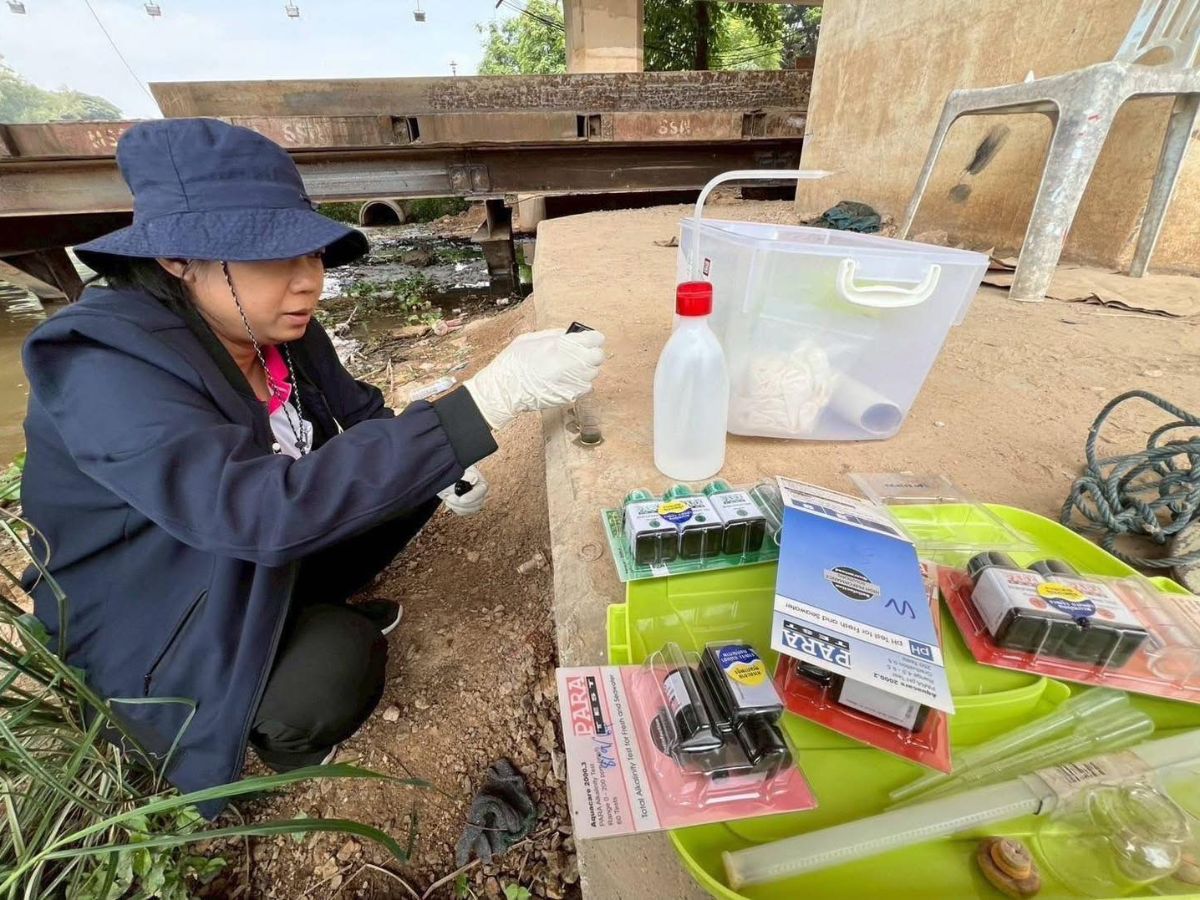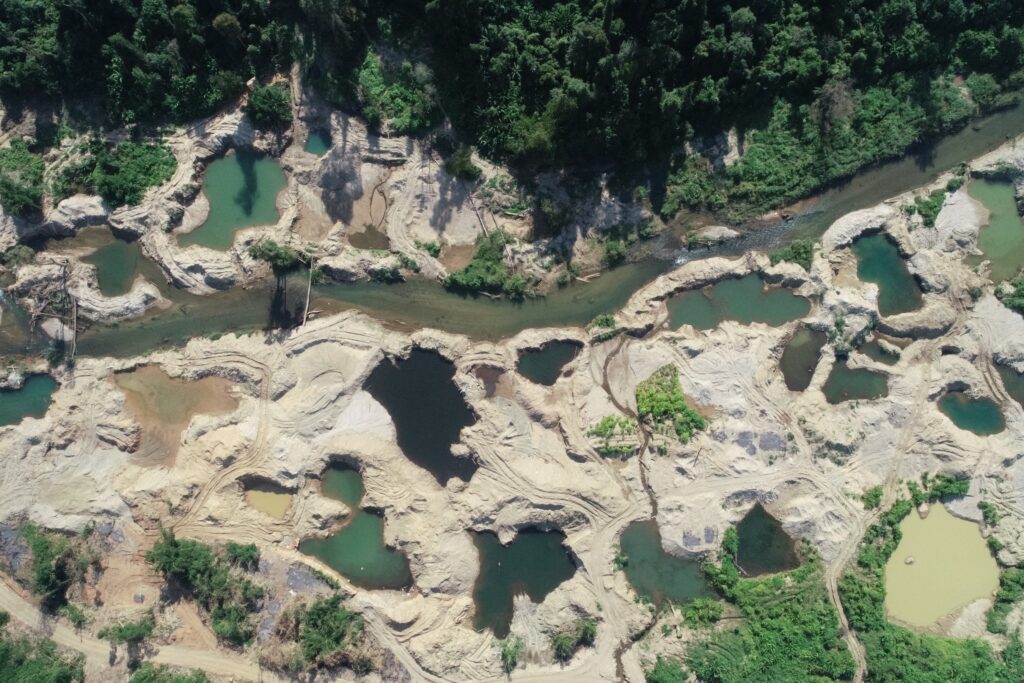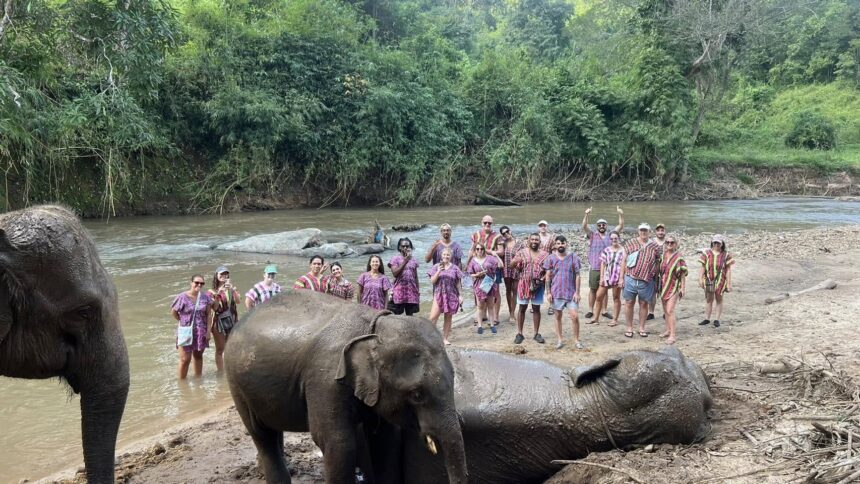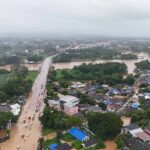Chiang Rai – The Pollution Control Department has issued warnings against using water from the Kok River after tests revealed arsenic levels exceeding safety limits. Samples showed water pollution above acceptable standards.
The Biochemical Oxygen Demand (BOD) in the Kok River averaged 5.2 mg/L, surpassing the allowable limit of 4. Arsenic levels ranged from 0.012-0.026 mg/L, exceeding the standard of 0.01.
A 2024 report on water quality ranked the Mae Kok River eighth among the ten most polluted water bodies in northern Thailand.
The Kok River runs approximately 285 kilometres, originating in Kengtung, Shan State, Myanmar, and flowing into Thailand through Mae Ai, Mae Chan, Mueang Chiang Rai, Wiang Chai, and Phaya Mengrai, before joining the Mekong River at Chiang Saen.
This 130-kilometre stretch within Thailand is vital for the region’s agriculture, biodiversity, and cultural heritage. Key tributaries like Mae Fang, Mae Lao, and Mae Suai rivers are now under threat, jeopardising water usage and public health in Mae Ai and Chiang Rai.
The main source of contamination appears to be gold mining activities by Chinese companies in Shan State, Myanmar, near the river’s origin. These operations, which began in 2024-2025, replaced dense forests with bare land.
According to the Shan Human Rights Foundation, these mines discharge untreated water into the Kok River.
This human-caused disaster is a cross-border pollution issue, adding to challenges like transboundary haze, which has already severely impacted Thai lives and the environment.
Chiang Rai Governor Charin Thongsuk is ramping up water sampling efforts along the Kok River, from the Chiang Mai border to Chiang Saen. Public health offices, local governments, and the Provincial Waterworks Authority have been tasked to assess water sources for household, agricultural, and industrial use.
Residents were advised to avoid direct contact with the river and not to use its water for consumption or farming.

Urgent Need for a Chiang Rai-Based Water Testing Facility
Dr Suebsakul Kitchanukorn from Mae Fah Luang University stressed the need for immediate measures to ensure the safety of tap water, which serves an estimated 120,000 residents. This includes about 40,000 users under the Provincial Waterworks Authority in Chiang Rai city.
The number rises significantly when factoring in commercial establishments, schools, universities, and other public spaces.
Most people rely on tap water for daily use, but current testing processes require samples to be sent to Chiang Mai, which takes about seven days. This delay could worsen the situation as pollution levels may rise over time.
Establishing a local lab in Chiang Rai for water quality and heavy metal testing is critical for faster, real-time results. While authorities claim the tap water is safe, the lack of clear data undermines public confidence.
Long-term exposure to arsenic is also concerning. Symptoms may not appear immediately, but the effects can manifest years later, leading to severe health issues. The government must act quickly to set up testing facilities and provide transparent information to protect public health.
Chiang Rai is home to three universities—Rajamangala University of Technology, Chiang Rai Rajabhat University, and Mae Fah Luang University. These institutions could collaborate to address the heavy metal contamination in the Kok River.
A coordinated effort, supported by government funding, should be implemented within a month.

Negotiations with Myanmar and China Urged
On a national policy level, the Thai government must urgently address the root cause of the problem: gold mining at the river’s source in Myanmar. Over the past two years, 5-6 new mines have been established in areas controlled by the Wa Army, with Chinese investments. These mines operate without proper waste treatment, significantly impacting the river’s ecosystem and human health.
Dr Suebsakul recommended three key actions:
- Thailand should engage Myanmar in bilateral discussions to address the issue.
- The Wa Army and Chinese investors must be urged to halt environmentally harmful mining activities.
- Informal channels, such as cross-border business networks and trade associations, should also be utilised to find a resolution.
The Kok River crisis is more severe than air pollution issues like PM 2.5, as there are no immediate protective measures that individuals can take. Unlike air pollution, which can be managed with masks and air purifiers, water contamination directly impacts people’s lives and livelihoods. Daily mining activities continue to release toxins into the river, making this a persistent problem.
Economic Impact on Chiang Rai
Chiang Rai’s economy, worth approximately 160 billion baht, ranks third in northern Thailand. Tourism accounts for 35% of its gross provincial product (GPP), attracting 5-6 million visitors annually and generating 58 billion baht in revenue. Agriculture, the second-largest sector, contributes 45 billion baht, while industry adds 36 billion baht.
However, the Kok River crisis threatens Chiang Rai’s tourism-dependent economy. Beach areas along the river, once popular during Songkran, are now closed. This has drastically reduced activities and business operations in the area.
Tourists are likely to lose confidence in water safety, impacting hotels, restaurants, and tourism-related businesses. The agricultural sector, heavily reliant on river water, also faces significant risks, affecting food security and local produce.
The overall economic impact could reach 60% of Chiang Rai’s GPP—more than 100 billion baht. This figure doesn’t account for long-term health costs for those exposed to polluted water.

Myanmar’s Chinese Mining and Regional Challenges
Associate Professor Choochok Ayupong from Chiang Mai University highlighted the deteriorating condition of rivers across Thailand. The Kok River, however, stands out due to its heavy metal contamination, particularly arsenic, which has intensified over the past two years.
Gold mining in Myanmar lacks proper standards and environmental safeguards. Without intervention, mining activities could expand, much like the uncontrolled growth of corn plantations that contributed to PM 2.5 pollution. Future scenarios for Chiang Rai must consider:
- Sediment, flooding, and toxin management over the next five years.
- Controlling mining expansion to prevent further environmental damage.
- Implementing a Strategic Environmental Assessment (SEA) to balance economic, social, and environmental goals.
The Kok River crisis is one of several challenges Chiang Rai faces, including transboundary haze and seasonal flooding. Immediate action is needed to address water pollution, as it directly affects public confidence, tourism, and the province’s growing reputation.
Without swift government intervention, Chiang Rai’s economy could face lasting damage.
Related News:
Expert Warns Chiang Rai Severely Lacks Flood Prevention Plans

Geoff Thomas is an award winning journalist known for his sharp insights and no-nonsense reporting style. Over the years he has worked for Reuters and the Canadian Press covering everything from political scandals to human interest stories. He brings a clear and direct approach to his work.












